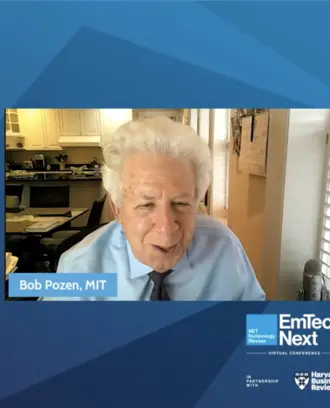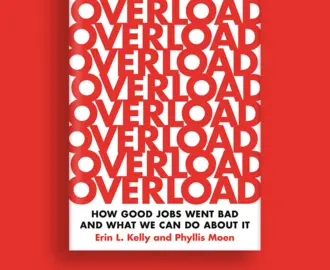A crisis brings an organization’s culture into sharp relief—and so it goes with the COVID-19 pandemic. The current health emergency is laying bare problems of cultural intransigence, narrowmindedness, and inflexibility at organizations around the world.
Nelson Repenning is a Distinguished Professor and Associate Dean for Leadership at the MIT Sloan School of Management.
But the pandemic will end and when it does, some organizations will be stronger for the experience of managing the coronavirus; others will not. What will account for the difference? Leadership.
Great leaders look at crises as a window into the inner workings of their organizations, allowing them to see behaviors that might be less obvious during normal operations. And they figure out ways to reinforce the effective elements of their organization’s culture and change the ones that aren’t.
Here are three suggestions to help your organization confront the challenge of COVID-19:
Accept and manage the unknown—and help your team follow suit.
The global pandemic is uncharted territory. Whether it be uncertainty about the likelihood of asymptomatic transmission or the vagaries surrounding when schools will reopen, there are many questions to which we do not have answers. Such elusiveness creates fertile ground for our tendencies to make unfounded assumptions. Our hard-wired desire for assurance leads us to accept speculation as fact and anchor on future paths that are but one of many possible outcomes.
Use this crisis as an opportunity to cultivate your organization’s capacity to handle ambiguity. Military leaders have long recognized the value of working through multiple scenarios so that teams are prepared for whatever the real situation might deliver, but this remains an underrated practice in most organizations.
Most managers don’t know when their organization will be getting back to work or at what scale. So, say so. Speak candidly about the things that you do and don’t know. Resist the urge to collapse that painful uncertainty into one possible future. With humility, you and your organization can prepare for a range of outcomes.
Determine your organization’s optimal cadence for communication.
Regular face-to-face contact with employees—whether it’s a standing staff meeting or a team happy hour—is important for engagement and productivity. But organizations often squander this opportunity by making meetings feel more like pointless drudgery than an occasion for collaboration and joint problem solving. The coronavirus crisis and the ensuant social distancing is forcing a huge number of meetings and team get-togethers online. So, use the disruption of remote work to reevaluate how you leverage human interaction in service of the organization.
Measure the effectiveness of your organization’s meetings in terms of the number of decisions that get made and problems that get solved. Meetings can be useful for other reasons, of course, but if a meeting never results in one of those two outcomes, reexamine its value.
Thinking of meetings this way offers two benefits. First, research suggests that people are motivated by a sense that they’re contributing to progress. Well-structured meetings provide opportunities for leaders to clearly define new problems and acknowledge the completion of work that led to results. Second, the metric helps assess the appropriate frequency of interaction. If a meeting rarely results in a decision or a solution, then you’re probably meeting too often. Conversely, if you never get through the agenda and every meeting spawns additional emails, then you probably aren’t meeting enough.
Be committed to, and transparent with, your employees.
A vast body of research shows the value of committing to the development and wellbeing employees. While this is easy to do when business is good, studies suggests it’s even more effective when the economy sours. Organizations that support their employees during the inevitable down market that will follow COVID-19 will be rewarded with a workforce that goes the extra mile.
Unfortunately, this may not feasible for every organization; many managers will have to lay off good people. Years ago, I co-taught a class with Jack Welch, the longtime GE chief. Once, during a discussion about downsizing, Welch said that the moment you know you are shuttering a plant, you should walk out to the shop floor and tell everyone face-to-face. A student asked, “Why would you do that? You’re killing productivity before you close the facility.”
Welch smiled, knowing the student has taken his bait. “Why do you think you are smarter than them?” he asked.
The closure, Welch suggested, probably wasn’t a surprise to the operators on the shop floor. They’d likely already noticed the factory wasn’t running three shifts and the products it was delivering weren’t well received.
In the case of COVID-19, managers are no wiser than their rank-and-file employees. Being transparent is a sign of respect. If you have to do layoffs, minimize the damage by being honest and forthright about why the downsizing is necessary.
To be sure, the COVID-19 crisis poses significant challenges for leaders in just about every industry around the world. In the coming weeks, managers will find themselves making decisions that would have been unfathomable even a few months ago.
But by taking certain actions now—admitting what you don’t know, maximizing the benefit of face-to-face interactions, and being committed to and open with your employees—your organization could emerge stronger and more effective.
Nelson Repenning is a Distinguished Professor and Associate Dean for Leadership at the MIT Sloan School of Management.



